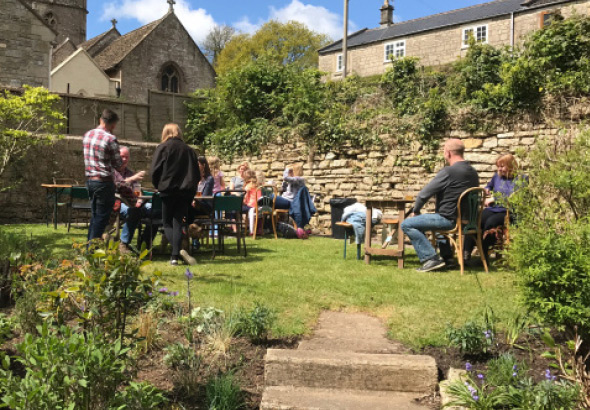Saving The Packhorse
After six years of campaigning, fundraising, planning, building, refurbishment and operational project management, The Packhorse finally re-opened its doors on March 18th 2018. In the two years since re-opening we have been delighted with the ongoing fantastic reviews about our food and drink and the warm welcome we always strive to provide.
The “Save the Packhorse” Project Team:
Nick Alexander – Krow Coles – Ben Cundy – Nick Erickson – Steven Gourley – Bob Honey – Phillip Legard – Jenny John – Trevor John – Alex Keene – Phillip Legard – Dom Moorhouse – Simon Pearson – James Townsend – Penny Townsend
————————–
May 2012 was a sad month for the village of South Stoke. The Packhorse Inn, which had been at the heart of the community for over one hundred and fifty years was sold to the highest bidder by Punch Taverns. Punch rejected several offers from experienced pub landlords in favour of a plan to turn the Packhorse into a residence with ground floor office space. The new owner was assured that planning consent for a change of use would not present a problem.
Public outrage followed. Penny Townsend, Simon Pearson, Steve Gourley and Bob Honey were among a group of villagers who, armed with torches and metaphorical pitchforks, gathered outside the pub to protest the sale, receiving coverage in the Bath Chronicle. The campaign to Save the Packhorse was born later that night, with Penny elected as chairperson. Her first job was to spread the word to the wider community, which required working through the night to produce over forty Save the Packhorse signs, which later appeared all over South Stoke and Bath.
Later that month, despite rowdy support, the Packhorse closed its doors for what looked like the last time.
The campaign team, however, were having none of it; an emergency public gathering was proposed. The campaign team were initially nervous about the possible response. What if no one came? Penny later recalled the event: “The Village Hall was rammed to the rafters, so much so we weren’t sure we could fit everyone in. It was at that moment we knew the campaign had legs, and it made us more determined than ever to succeed.”
By the end of May 2012, the Save the Packhorse campaign had transformed into a fully-fledged project effort. The team soon discovered that Bath and North East Somerset (B&NES) Council were on their side and that local community policy restricted the new owner: he could only convert the pub to offices if he could prove that a pub operation was no longer commercially viable. By now, the word was out on the street – even national news coverage – and nearly fifteen hundred people had joined the online petition.
Over the next few months, a series of excitable letters were published in the Bath Chronicle, both in support of the reopening of the Packhorse (and some in support of the owner’s right to convert the building). Bath Magazine came out in favour of the Packhorse remaining a pub, lamenting its demise. In February 2013, due in no small part to the dogged tenacity of the Packhorse team, the pub was added to B&NES’ Assets of Community Value list, which required the owner to give the local community up to six months to put together a bid to buy it should he decide to sell.
Around this time, The Bell Inn in Walcot Street, Bath was put up for sale. The local community (something in the Bath waters?) subsequently ran a successful campaign to bring a popular pub under community ownership, thus further inspiring the Packhorse team to keep their dream alive.
May 2013 saw the first Save the Packhorse pop-up bar appear in the middle of South Stoke. This was to become a well-attended annual event with musicians, flowing cider, and press coverage.
By October 2013, the owner of the Packhorse declared his intention to sell. There was, however, a very wide gap between the project team’s valuation and the owner’s expectations, resulting in a stalled negotiation. Under B&NES rules, this left the owner free to sell the Packhorse to anyone he wanted to within a year. The high profile of the campaign, however, proved to be a dissuasive factor for other potential buyers.
Over the next year, the project team tabled a number of enhanced bids; each one was rejected. With both sides exhausted, the owner threw the dice one last time, submitting a fully-designed planning application for a change of use to residential.
The Packhorse team were initially caught off guard and feared the worst. Troops were rallied, letters were written and the council’s website was bombarded with objections to the plan. Eventually the application was withdrawn and stalemate once again ensued.
The next round of negotiation was resuscitated and led by Dom Moorhouse, a newcomer to the village. After eighteen months of patient relationship building, the owner – recognising the genuine passion for the community cause – finally agreed to sale the building back at a tenable price. Via this deal, the project supporters were effectively given a three-month period to put their “money where their mouths were”: verbal support had to quickly translate into financial commitment else the community buy-back option would be lost forever. At the fourth annual Save the Packhorse event, held in June 2016, the announcement was made: we had less than 100 days to raise £500,000 plus legal costs to secure the building!
A formal prospectus was published at the end of the month, and within three weeks £287,000 had already been mustered. Dom later said that “The negotiation was one of the most nuanced I’ve been involved in, in over twenty years of doing business. Thankfully, calm heads prevailed and I’m delighted that the owner eventually recognised the genuine community intent behind our efforts – extending us this option to fund raise”.
By August 2016, with just a couple of weeks to go, a total of £474,950 had been raised and it looked like the Packhorse might just be coming home. It was enough to dream, but dare the community believe?
September 10th 2016 is a day that will be long remembered in the Packhorse tale. Hundreds gathered in the gardens, to hear the announcement that over 200 investors had pledged a total of £601,000. A staggering community effort had saved the building but the hard work had only just begun.
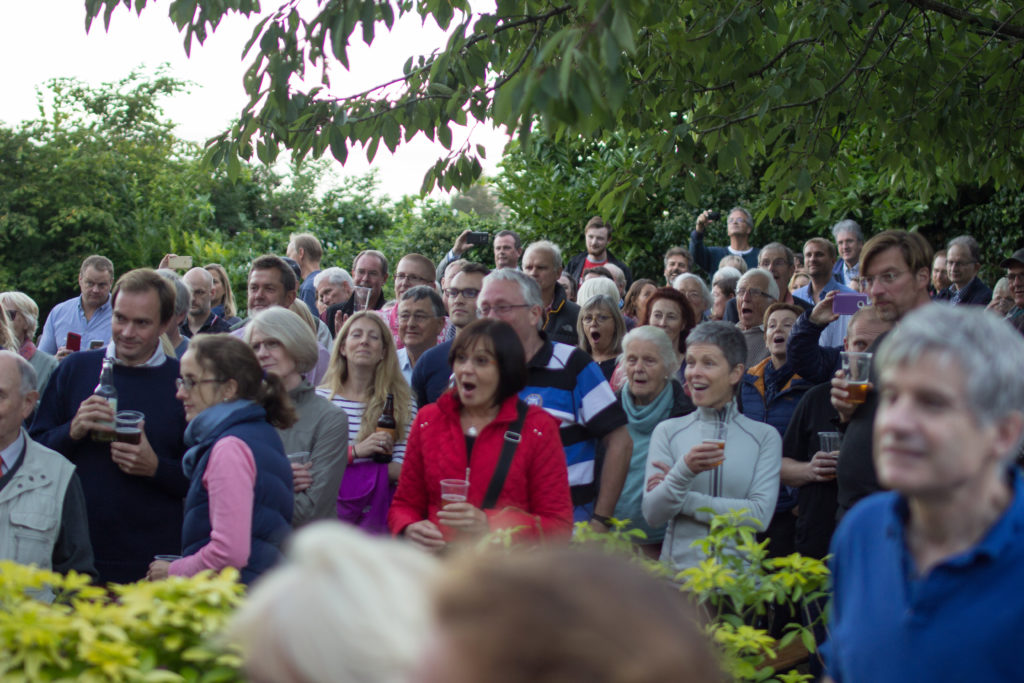
Figure: The “we have done it” announcement (building buy back)
Penny Townsend, one of the original prime movers, retired from the team: her original goal to Save the Packhorse was now, she felt, in capable hands. And so it was. One of the most remarkable aspects of this project has been the varied, dedicated talents that lie within throwing distance of the pub. Trevor John, a retired Chartered Accountant, steadily steered the team through reams of commercial contracts and shareholder paperwork. Dom and Ben Cundy (who brought his considerable charm and financial skills to bear) led the ongoing fundraising campaign.
Now began the onerous task of designing, planning and procuring major refurbishment works – the building was effectively derelict after decades of underinvestment. Nick Alexander led the building aspect from the off. This quickly became a massive piece of work – especially so considering the building’s listed status and the myriad of suppliers and advisors, Nick had to keep in lock-step during this challenging project phase.
Whilst building designs and complex planning permissions were being laboured over, a veritable army of volunteers stepped forward. Jenny John and our expert gardener, Alex Keane, headed up a team to reclaim the previously lauded pub gardens, which had overgrown from years of neglect. Six Duke of Edinburgh Award students from Ralph Allen School led the charge but were soon to be joined by hundreds of others who worked multiple summer evenings to convert a veritable jungle into the garden you see today. Alex estimates that in 2017, over 1000 hours of volunteer team were allocated to the garden effort alone – including the movement by hand of 15 tonnes of soil and a mammoth turf-laying session. This has been no ordinary garden reclaim; it should be noted that Alex, supported by professional landscaper Tom Chapman in the early stages, has thoughtfully designed an outdoor space with over 200 planted species.
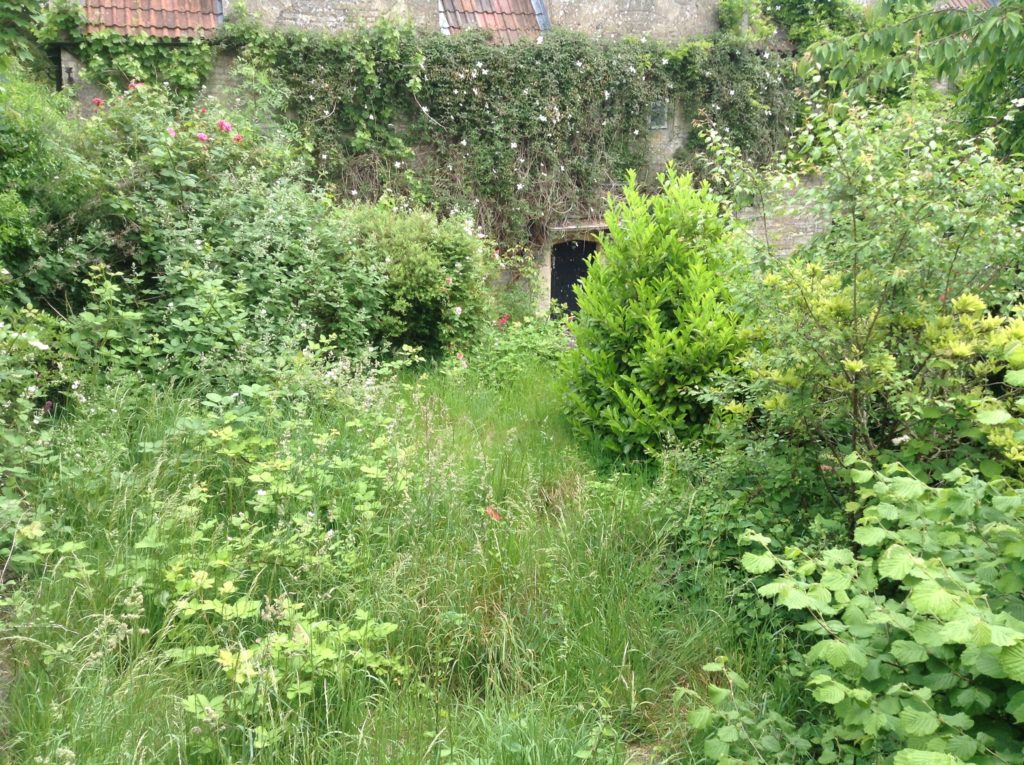
Figure: Garden at point of building purchase
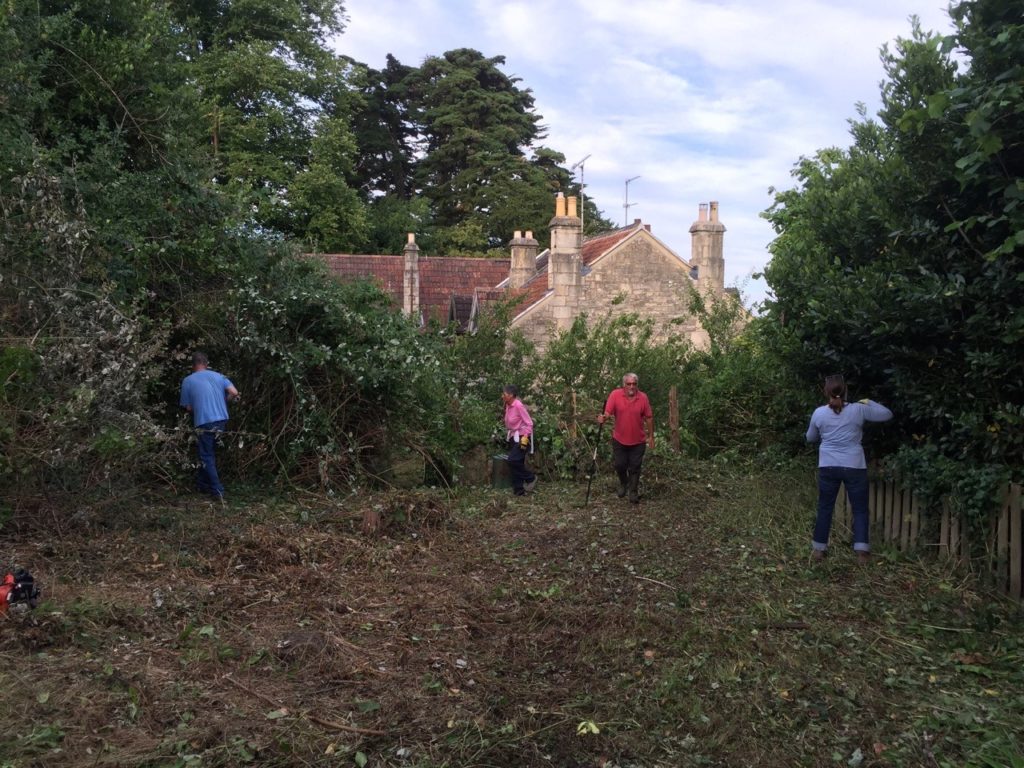
Figure: An early garden clearance party
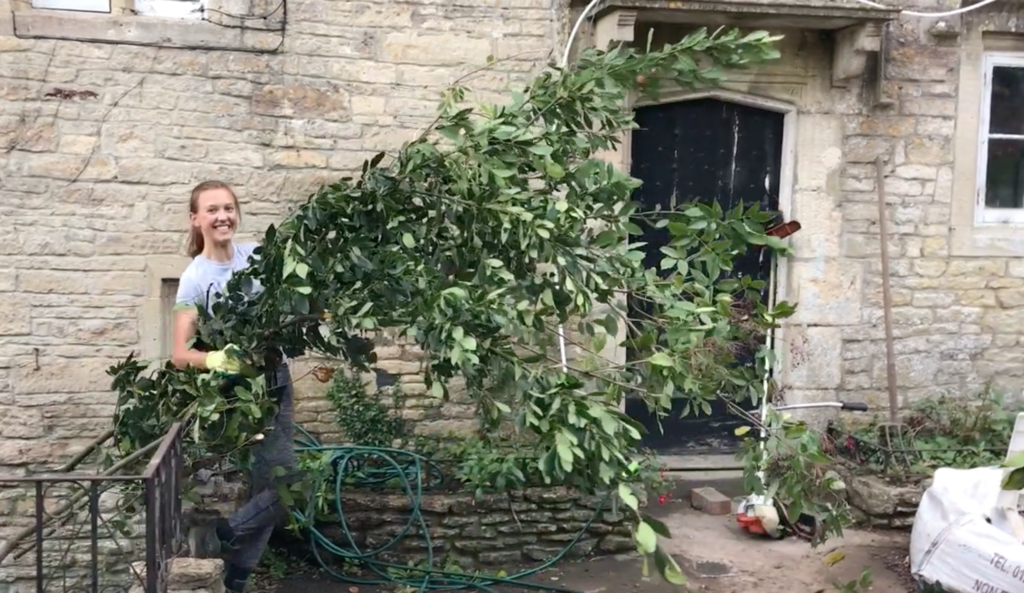
Figure: Young and old took part in the many shrub clearing evenings
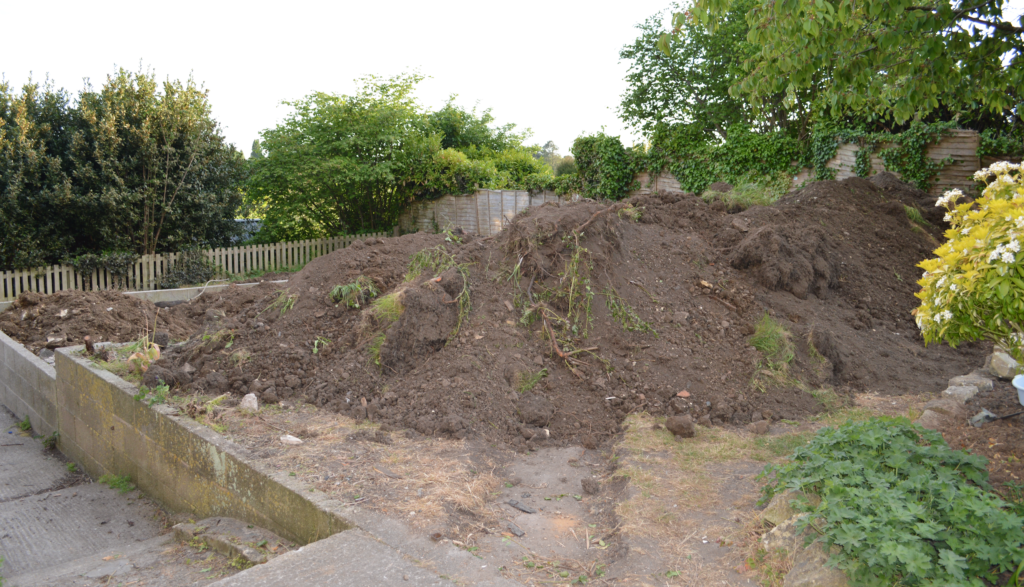
Figure: Soil heap (from front excavation) in back garden

Figure: Soil levelling party!
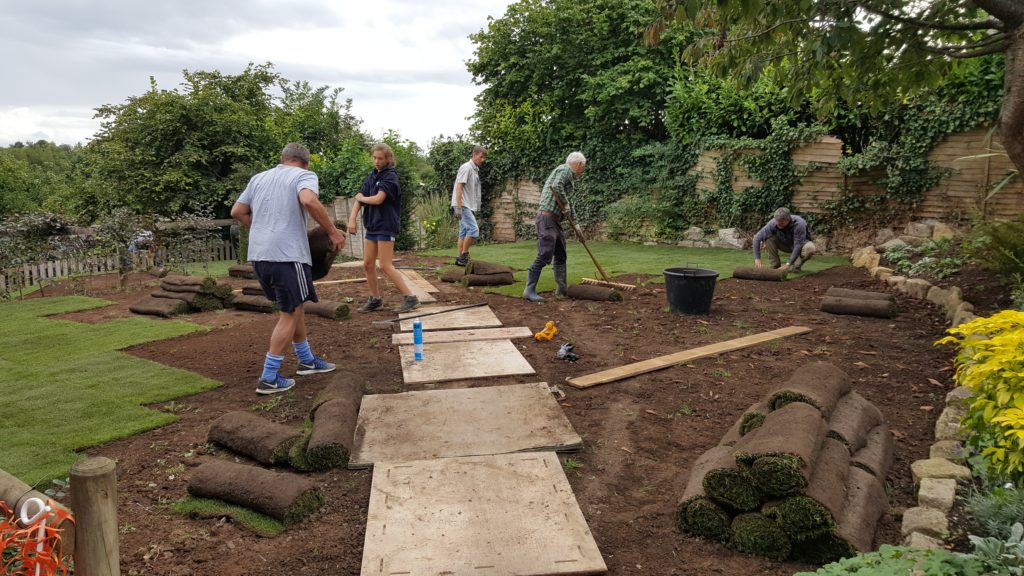
Figure: Turf Laying
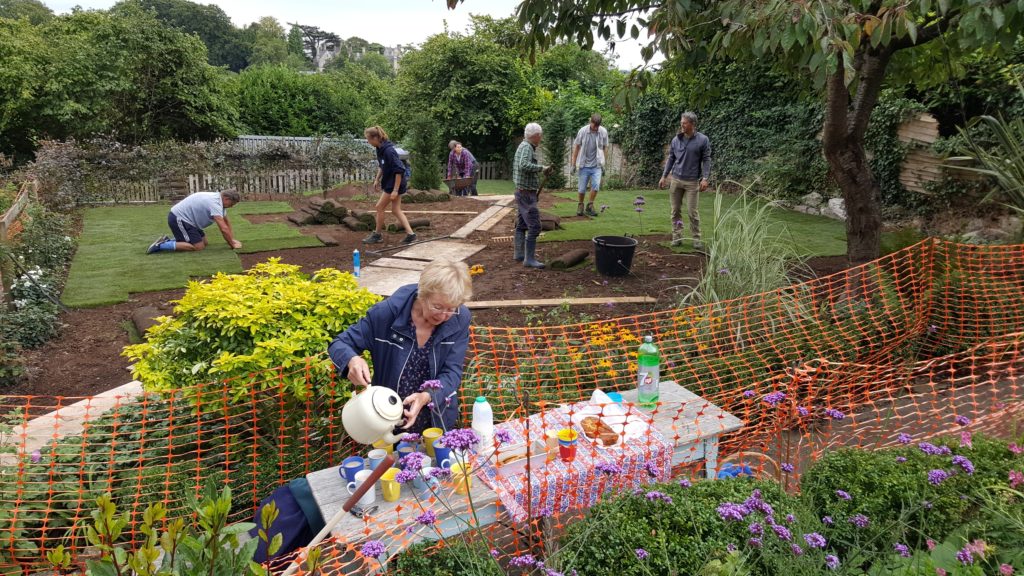
Figure: Keeping the turf layers refreshed
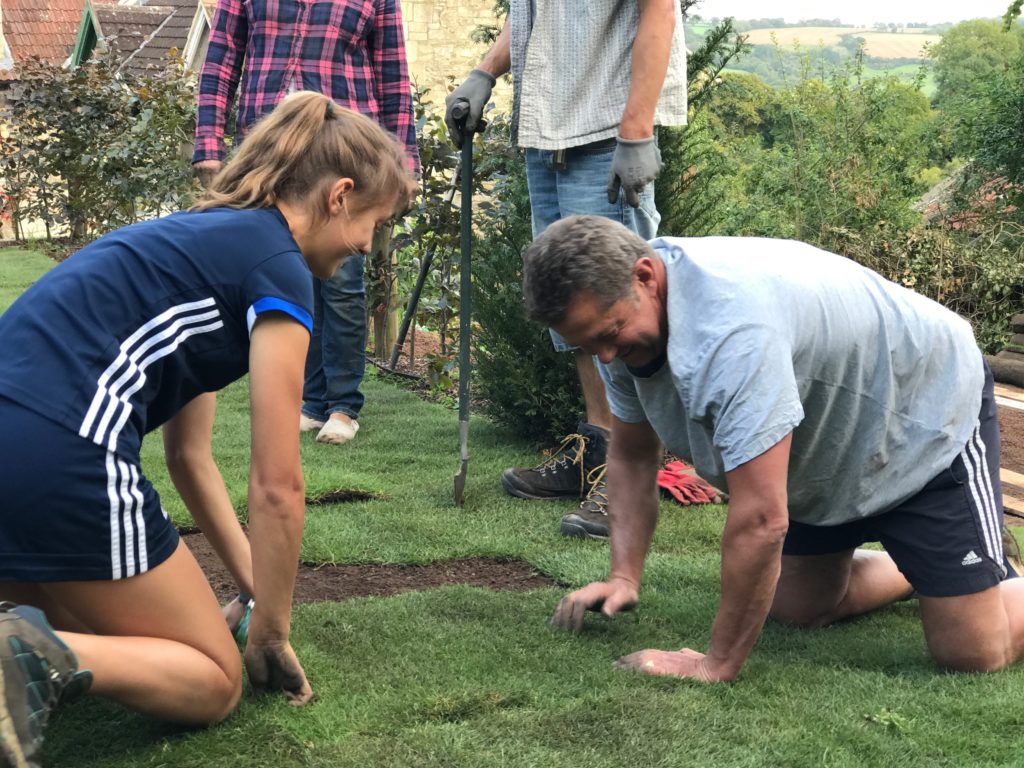
Figure: Turf laying
Inside, the building, working parties stripped and cleared the building out ahead of building works. Bob Honey and Krow Coles were invariably to be found at the centre of these efforts – coordinating skips and regular tractor runs ahead of the main works.
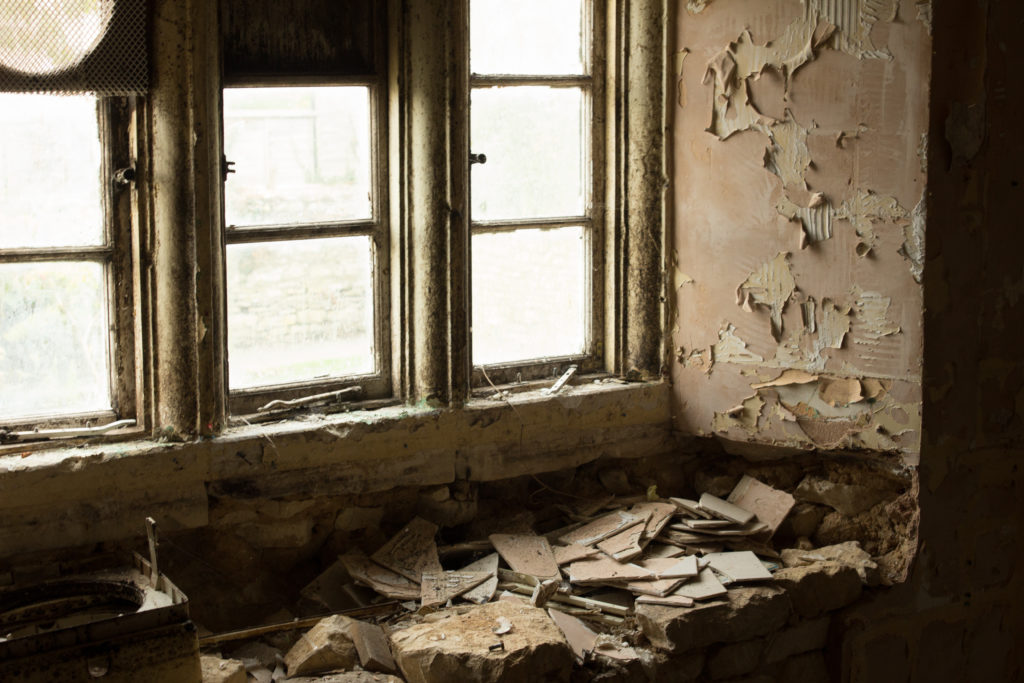
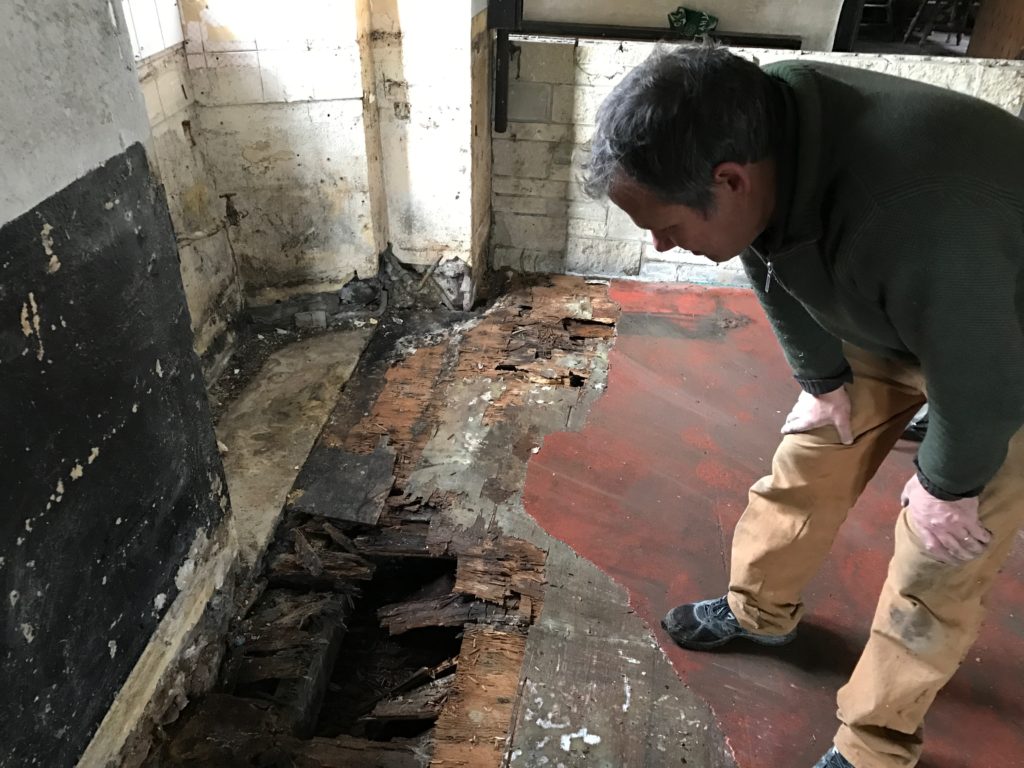
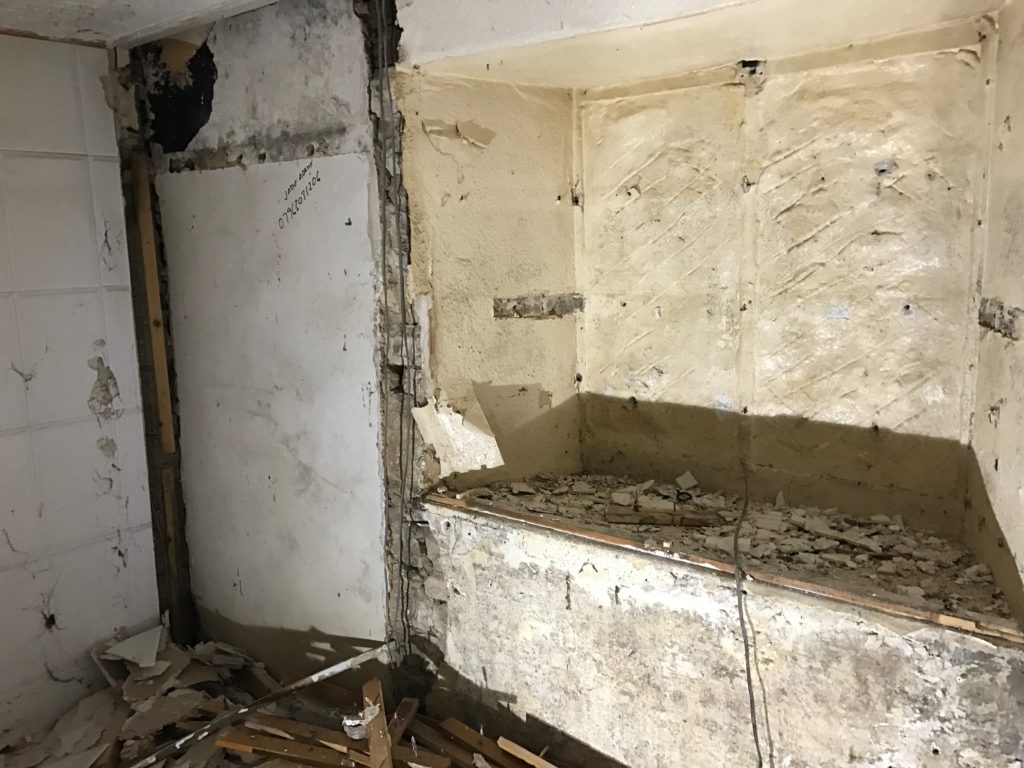
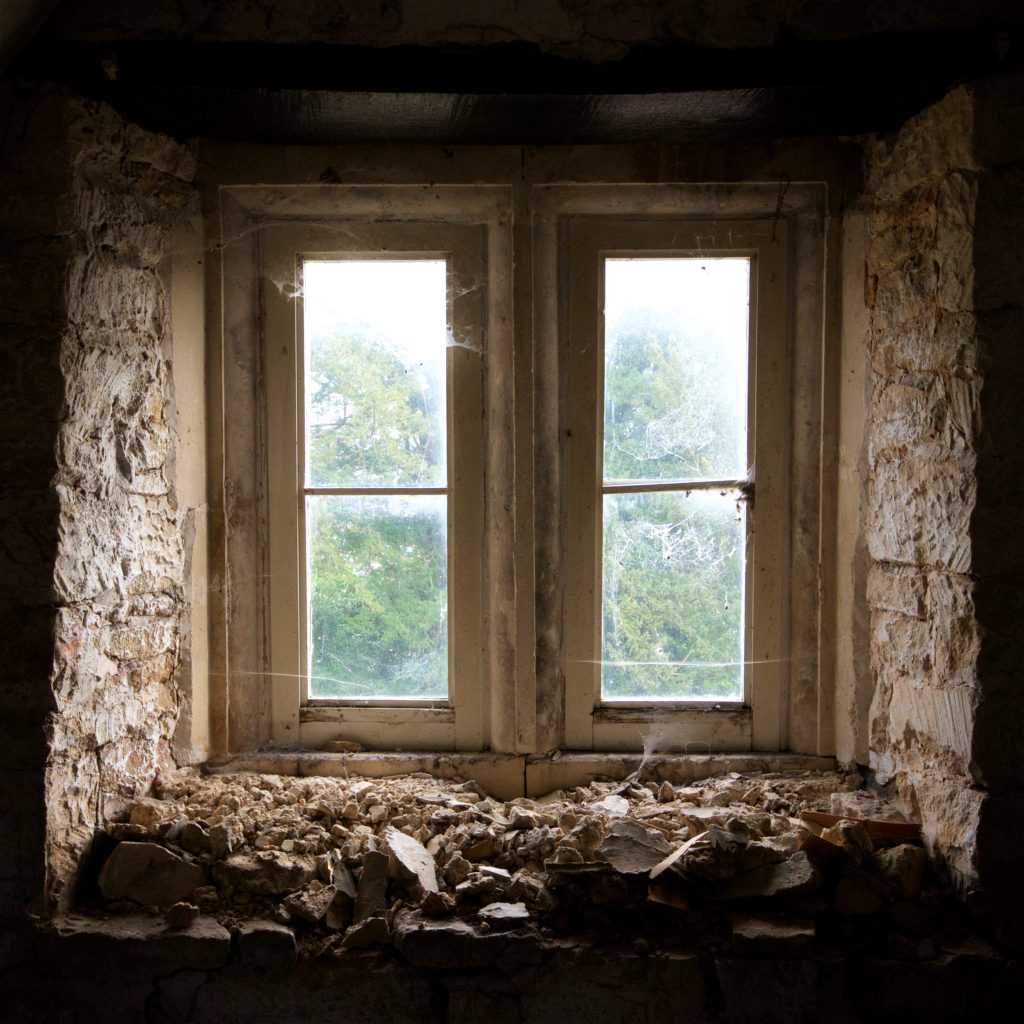
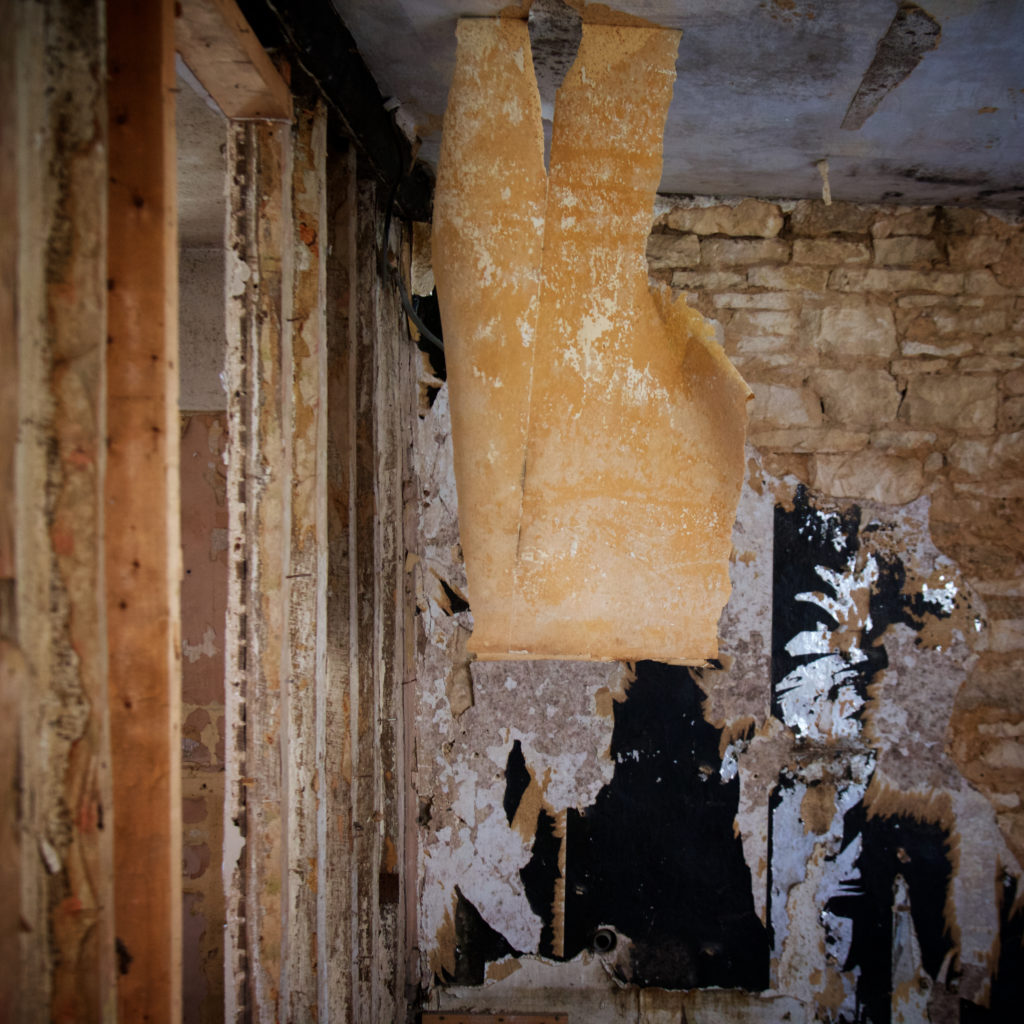
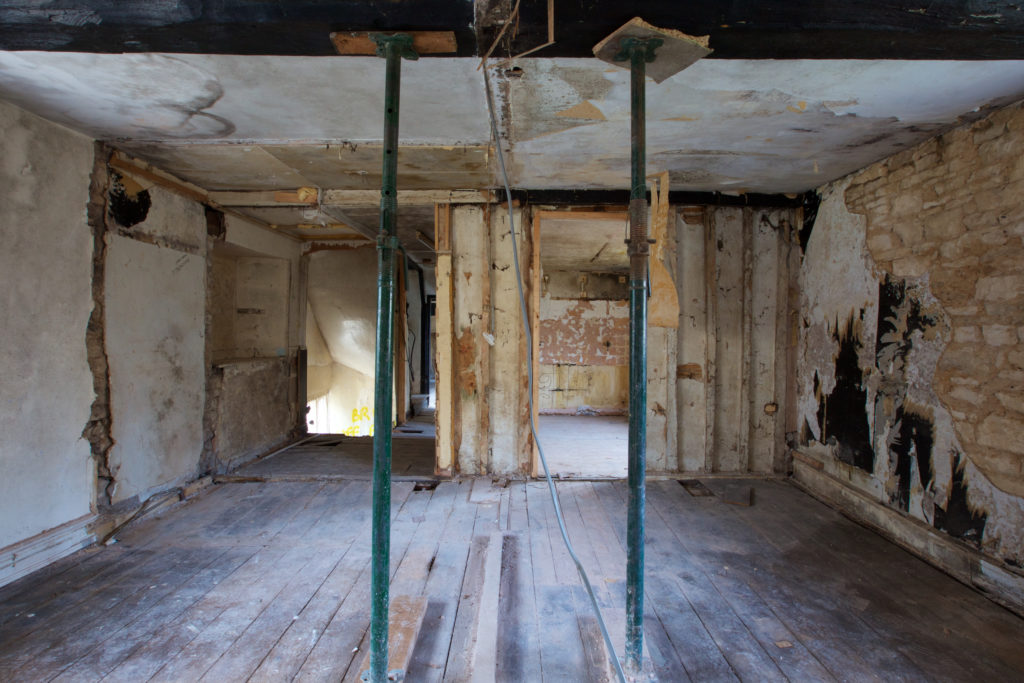
Figure: The derelict interior at the point of our possession
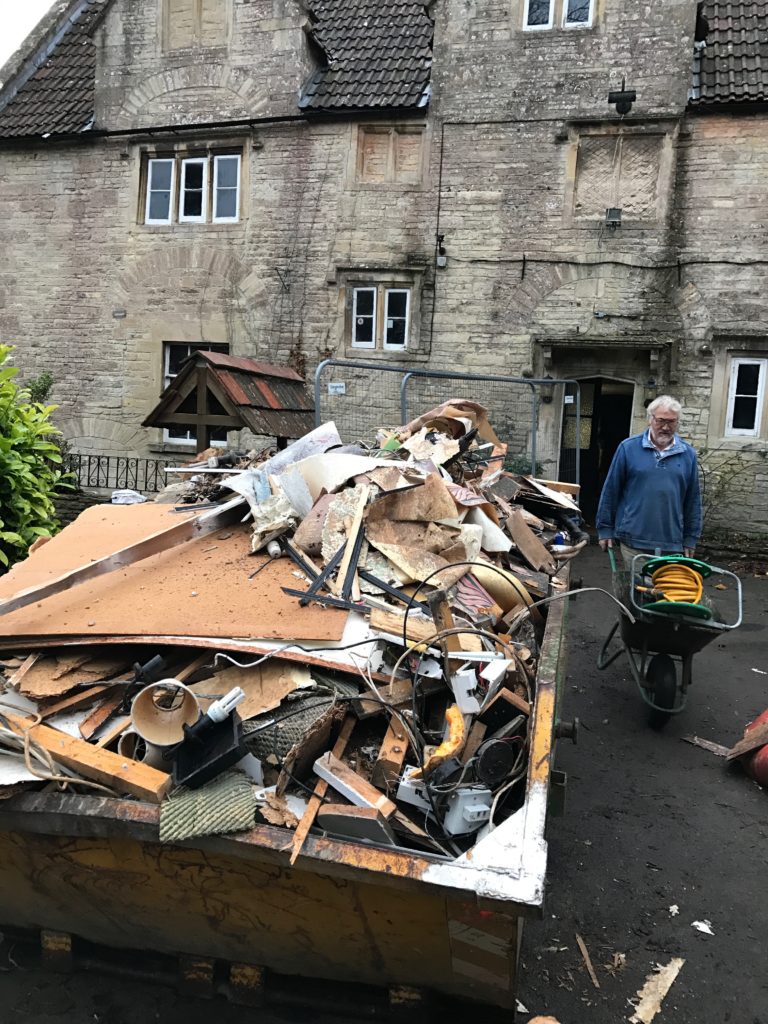
Figure: Over 25 skips were filled by numerous volunteer “strip out” parties
An original C17th century fireplace, badly damaged and hidden behind plasterboard, was discovered in one of these many sessions. The story of its restoration is, perhaps, illustrative of the extraordinary magic of this story. A wishful request to our fast growing social media following for a master stonemason, led to Nigel Bryant and his wife Becky, returning from France for a week to tackle the job. Nigel is but one of hundreds of skilled volunteers, artisans, designers, expert-technicians and advisors to have leaned into the cause – as joined by a multitude of community-spirited local companies who have supplied products for free or with heavy discount. By example, Roper Rhodes, equipped the pub with all its fine bathroom equipment for free. The Packhorse is extraordinary for many reasons but not least for the fact that it has been restored with a thousand, caring hands.
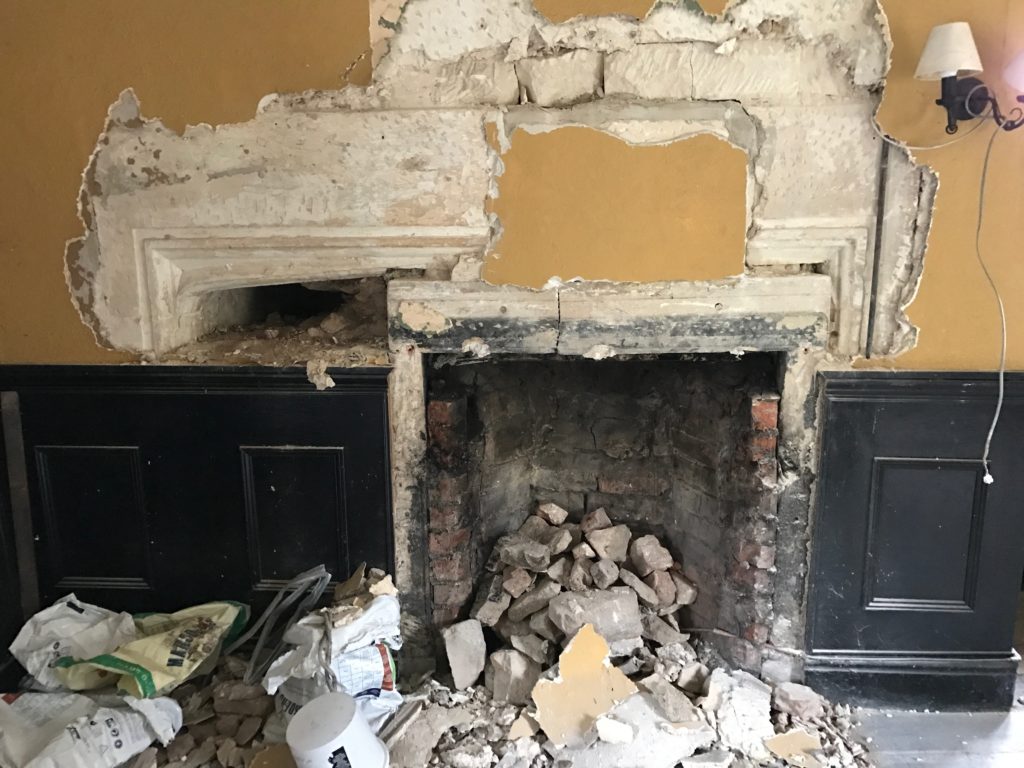
Figure: The first reveal of the original C17th fireplace in the saloon bar
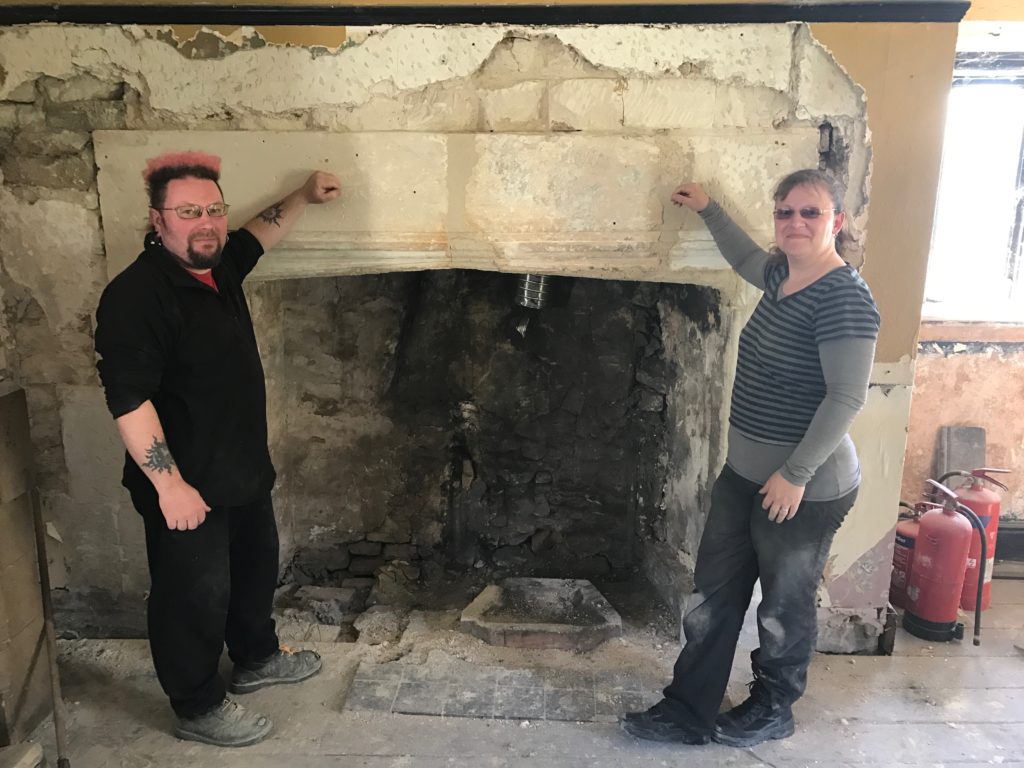
Figure: Master Stonemason Nigel Bryant, with wife Becky, during the one-week restoration effort
The building works were commissioned in September 2017 – initially with Gibbons expertly supervising the demolition of the external ladies toilet block and new car park construction before the main works. Ably supported by the team’s quantity surveyors, Nick Erickson and Terry Pitt, it is a massive tribute to Nick Alexander and this sub-team that the Packhorse has been restored so sensitively to its past and within a very lean budget! To this plaudit, also lies our very carefully selected builders: R.O. Dando & Sons; their professionalism and “go the extra mile” attitude for this community endeavour was, quite simply, first class.
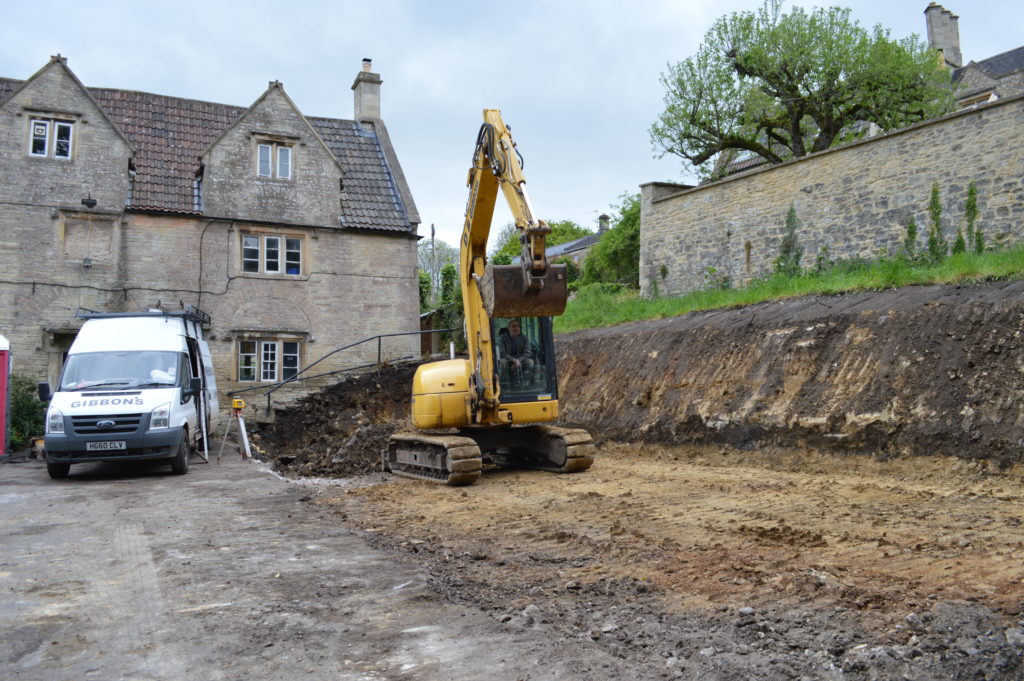
Figure: Initial earthworks (Gibbons)
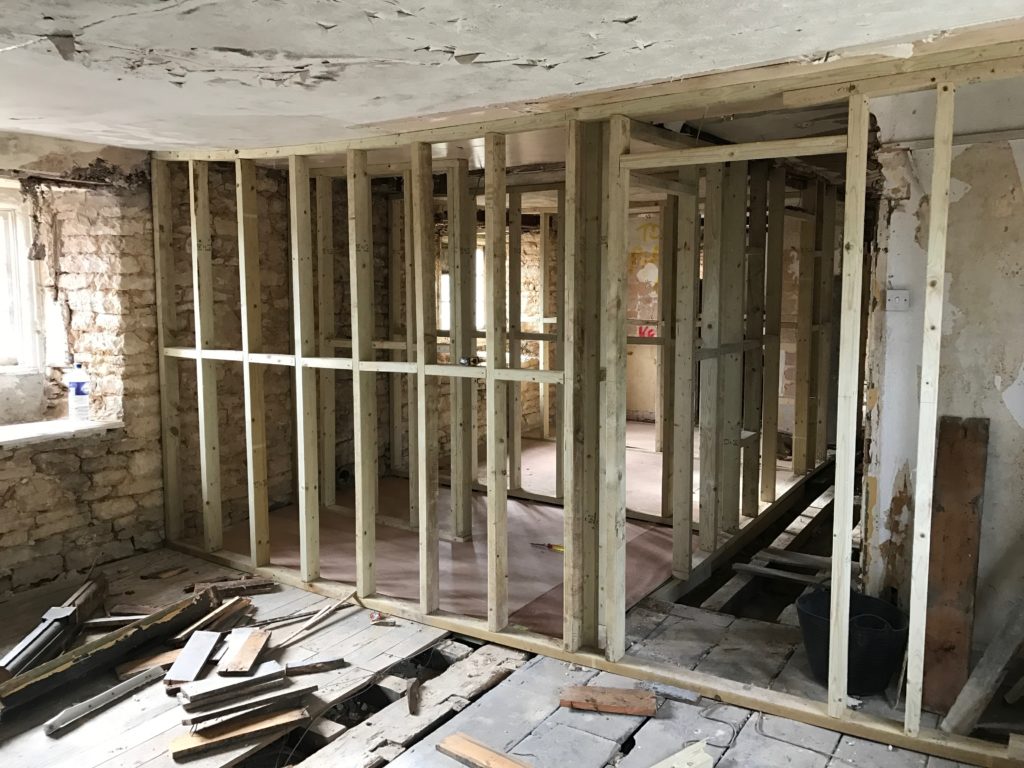
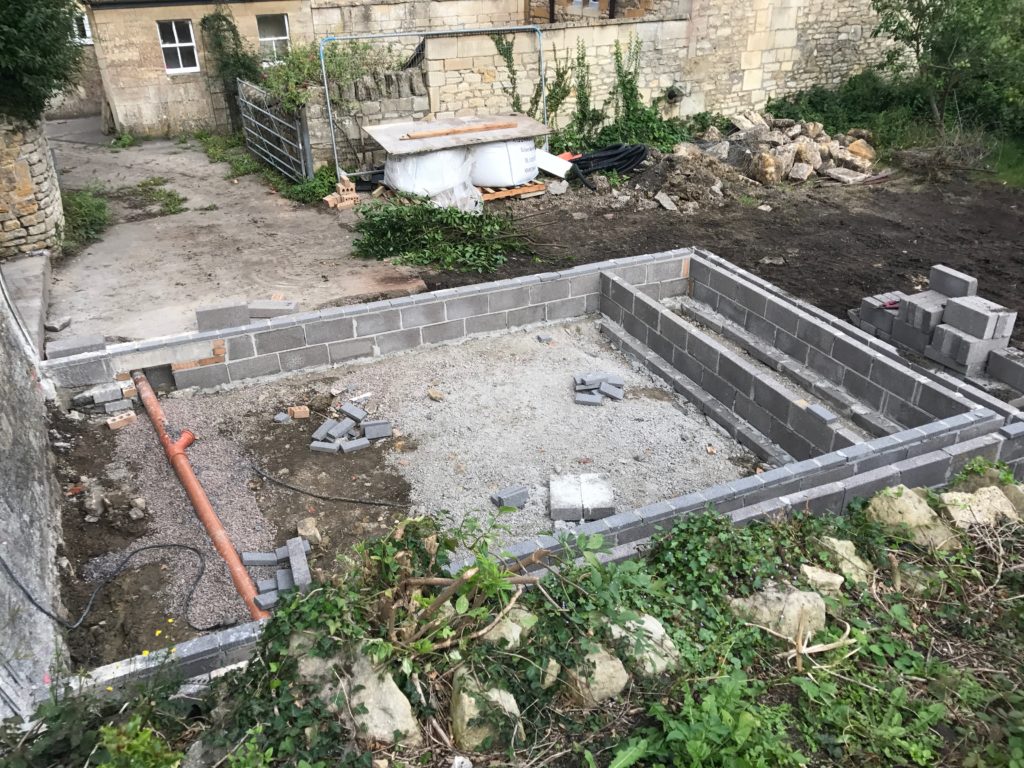
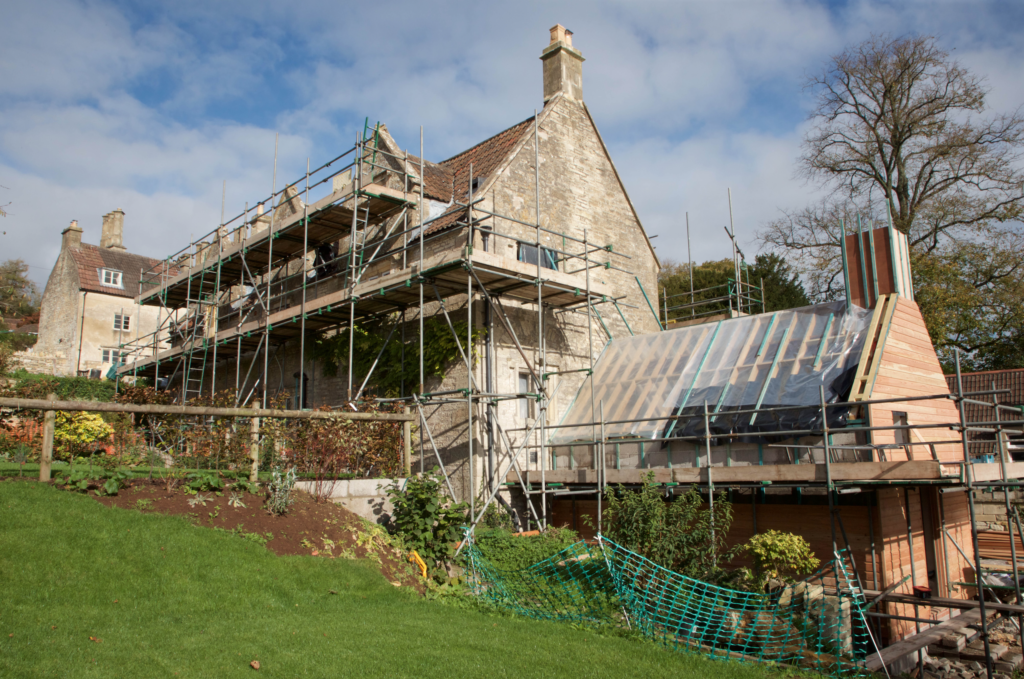
Figure: Main building works (R.O. Dando & Sons)
Meantime, the enormous fundraising challenge remained. A final target was set. If we could raise a further £500k by 28th October 2017 then a Spring 2018 opening was tenable. Buoyed by continued media attention and regular communications to supporters – managed ably by Steven Gourley and Phillip Legard – so the campaign edged closer to this extraordinary target. Again, with a final flush in the last twenty four hours, we achieved the seemingly impossible. The Save the Packhorse Project team had now successfully raised an immense £1,025k from 430 visionary shareholders – whose names we celebrate in the hallway. As of opening, this is the highest sum raised for a community pub buy-back in the UK ever.
And so to final efforts and the frenzied build-up to opening. Ably led by Trevor and Dom, the team steered themselves through a seemingly-endless task-list: operational kit out, website development, menu preparation, furniture sourcing, supplier management, IT system configuration, staff hiring and training. It was during this frenetic phase that the old sign was taken down in preparation for commissioning a new sign art piece – the subject of a public vote. Once down, however, we discovered a beautiful hand-painted older sign hidden behind a front place. With huge public support, and as fitting with the overall project ambition to restore not reinvent, we decided to repair this original with the support of local artist, Catherine Beale.
On Sunday 18 March 2018, after final weeks of operational testing (and one hell of a private project team party!) the Packhorse threw open its doors again to the public. Revealed to all was a completely transformed and rejuvenated building, beautifully restored gardens and a ready-to-serve, skilled new operating team. We had eventually arrived at a day that was but the stuff of wild and whimsical imagination only a few years prior.
None of this would have been possible without the dedication of the core Packhorse team and all those many, many community-spirited individuals who have given their time and expertise selflessly, to help bring this heritage pub back to life. For a long time we could but dream. Now, with blood, sweat and more than a few tears that dream is a reality. When you visit the Packhorse you’ll realise how special it is as an asset of community value. There are very few pubs around Bath with such character, fewer still with such magnificent gardens and but a handful that are so cherished by locals and visitors alike.
Bob Parfitt and his wife Judy are local historians who have researched the history of the pub, helping to date its founding to 1618 (via dendrochronological examination of roof timbers). It is a fitting end to the Save the Packhorse story, that the pub reopened its doors in 2018, exactly four hundred years after its first days as an Ale House.
On behalf of all our 430 shareholders, welcome to our community pub. We’re proud to collectively own it and prouder still that you have decided to enjoy our hospitality and fine local produce. We hope to see you again soon!

